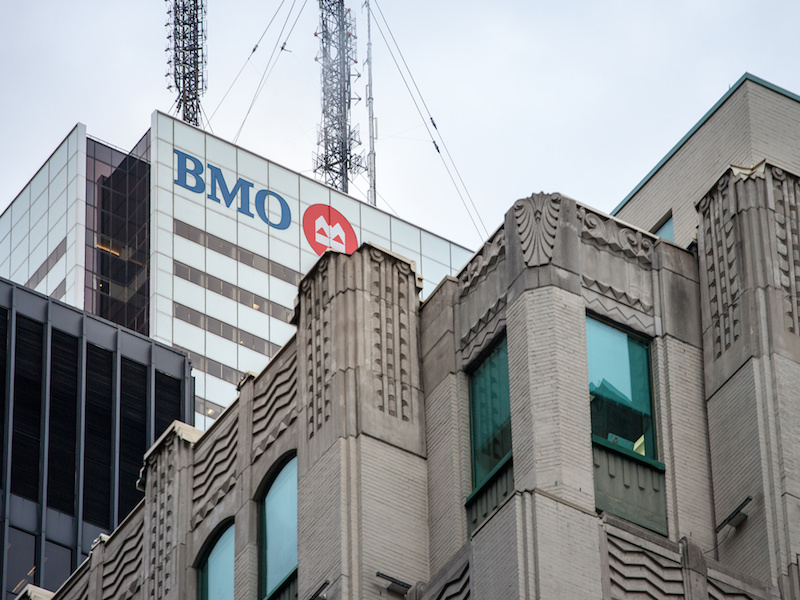

Before the coronavirus pandemic, 20 per cent of BMO Financial Group’s 45,000 employees were working from home on a fairly regular basis. Since March, that’s jumped to 80 per cent.
“We have, of course, people who are in branches who need to go in and serve customers face to face, but we have schooled up our work from home at a pace we wouldn’t otherwise have done,” says Karen Collins, the bank’s chief talent officer. “If we’re looking for good things that are going to come out of this crisis, that’s certainly one good thing.”
That said, she also highlights some detrimental aspects of working from home. With people no longer commuting, they have no separation between work at home, so they can potentially be working 16- or 17-hour days. As well, people can feel socially isolated — especially single people living alone — which has an effect on their mental health. And many people are juggling the responsibilities of working and parenting full time. “So people are running families essentially out of their office and that’s stressful,” says Collins.
Read: Webinar: Coronavirus and workplace mental health
Bill Howatt, president of Howatt HR Consulting, notes the current environment is unchartered water, with many employees learning how to do their jobs at home for the first time and adjusting to the new challenges. “There’s a whole lot of anticipatory anxiety around the unknown that’s already amping people up. And people are potentially working up to three hours extra a day during these early days of home isolation.”
Before the pandemic shifted the nature of the workplace, it’s likely many employees were already feeling stagnant or apathetic in their jobs, he says, noting that’s where the challenge lies. “Their resources are drained and they don’t have that capacity. So I’m not sure if it’s burnout as much as it is a fatigue and cognitive exhaustion in the early days. However, if they continue in this loop and continue to work at this pace for an extended period of time, I think burnout will be our next frontier for some folks.”
To manage this work-from-home burnout, BMO has introduced a number of initiatives. The bank has set up a response site on its intranet that includes resources like how to collaborate virtually and how to create communities virtually, as well as highlighting its well-being and mental-health supports and sharing a work-from-home guide.
“We also have Skype for Business and we’re rolling out Microsoft Teams,” says Collins, noting these communications tools are great to help people feel a sense of connection through their work. But the organization is also using these tools for non-work gatherings.
Read: 70% of employees satisfied with employer communications around coronavirus: survey
“Our work-from-home guide encourages managers to have virtual coffee chats or cocktail parties at the end of the day, where everybody is up on Zoom or Microsoft Teams, so they can see each other and have the virtual cooler or office experience that a lot of people are really feeling like they’re missing. So we’re trying to create that sense of community, when people are working from home in a way that we didn’t intend for them to do, and we didn’t expect. And we’re continually surveying our workforce to get feedback on how they’re feeling and how they’re doing.”
While these tools are great for BMO, it’s important to acknowledge that not all employees need the same thing right now. Howatt suggests managers connect with their teams and be clear about expectations, asking about work priorities, what can be put on hold, their focus and how they can best be supported. Managers can also host a daily check-in with employees or virtual open office hours each day.
“In other words, create the conditions that can power employees around isolation, removing barriers,” he says. “That’s what a lot of people don’t understand — loneliness is the absence of social connections that meet your needs. However, when a person becomes isolated and there’s something they feel is an obstacle between them and understanding or interacting with other people, then people can feel disconnected.”
Read: Behaviour analytics can be used to detect employee burnout: survey
To avoid burnout, employees should create a schedule and stick to it, says Howatt, and set realistic expectations while being mindful of other demands and drains. “Think about yourself as a battery: what are the things that are draining my battery? Work, kids, husband, preparing more meals, cleaning more — all of these drains . . . . What are the things I’m doing that are charging my battery? And pay attention each day — I’ve got five drains and one charge. If your battery is getting drained lots and you’re not investing any time . . . . It’s being mindful of what you need to support you, to charge your battery.”
In BMO’s case, it created wellness bursts on its employee well-being app around a number of topics. One of the key ones, according to Collins, is about structuring your day when working from home so you don’t end up burning yourself out — and things like creating a schedule and sticking to a start and end time.
“We have a ‘pens down at 5:30’ mandate on my team and I make sure people are accountable for that,” she says.
For employees who are feeling any of the symptoms of burnout, it’s perfectly fine to activate some form of support — whether that’s an employee assistance program or peer support — to problem solve how to get ahead of symptom load, says Howatt. “In other words, battery drain, can’t charge it, get some help.”
Read: Should Canada follow France’s lead in clamping down on off-hours email?
